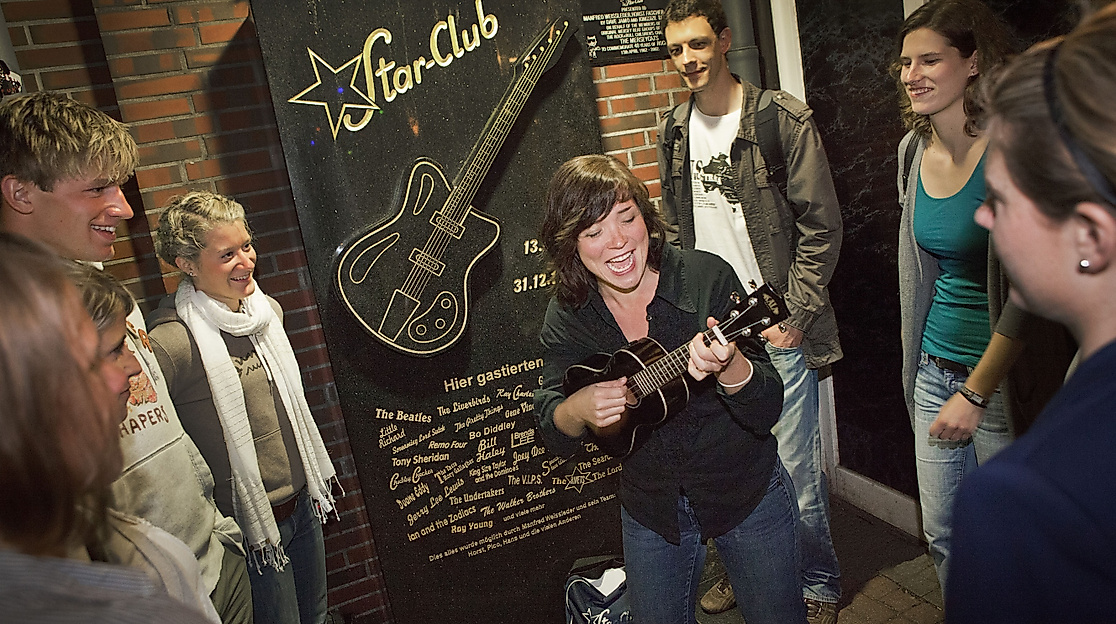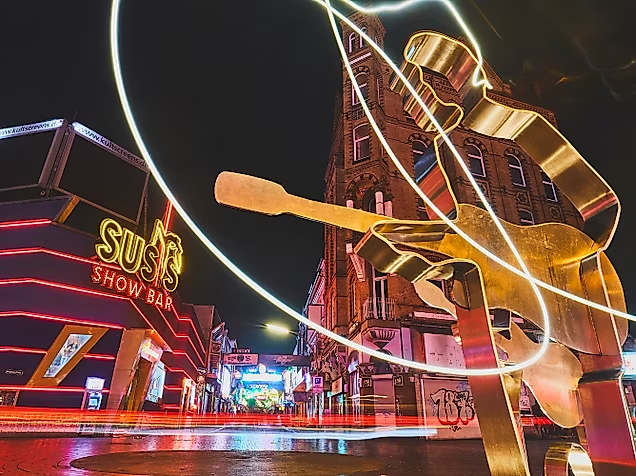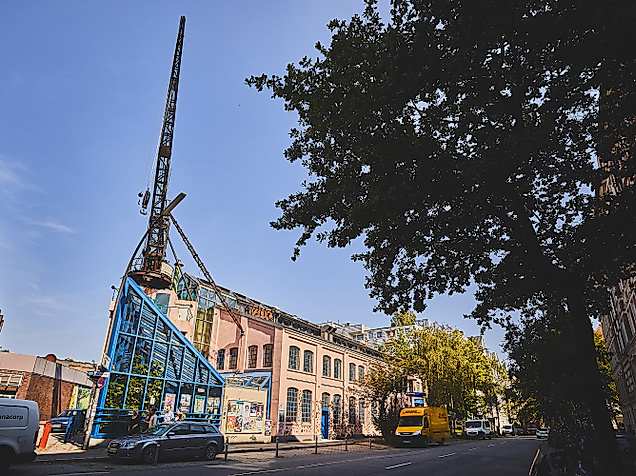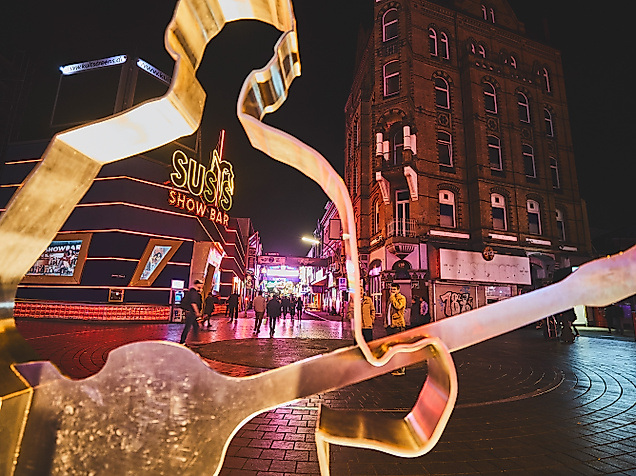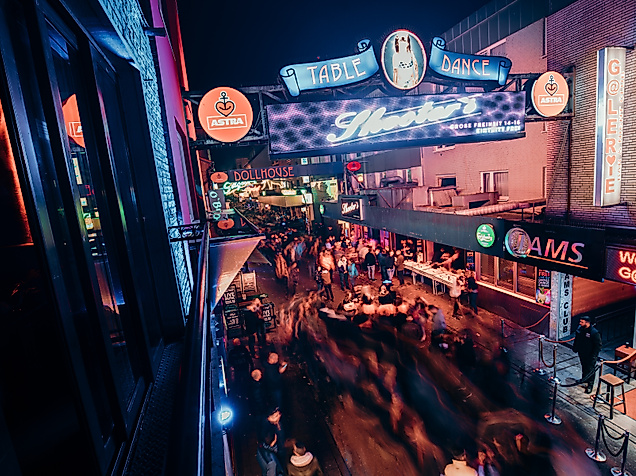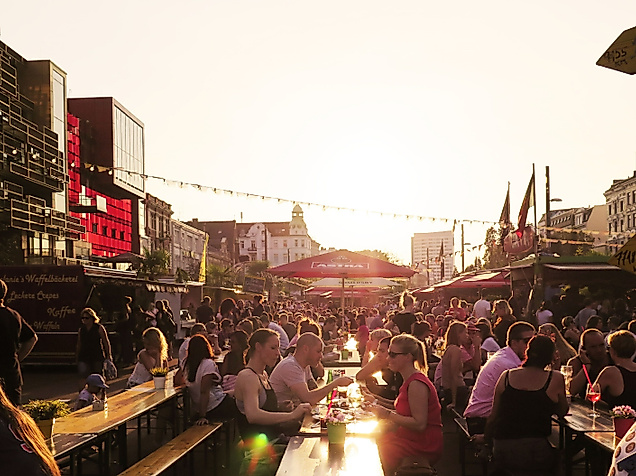In a backyard of Große Freiheit, a plaque commemorates the former Star Club. In the 60s, great musicians such as the Beatles, Jimi Hendrix, Little Richard and Fats Domino performed here.
Door to door with striptease shops and nepp pubs, suddenly sweating young Englishmen in leather jackets and dangerous hairstyles stood on stage, let their guitars thunder and screamed hoarse declarations of love to Lucille, Carol, Peggy Sue and Miss Molly through their 30-watt amplifiers.
This club was a revelation for the then youngsters, the "Halbstarken". Since Bill Haley had initiated wild hall and street battles between his fans and a truncheon-wielding, tear-gas-throwing police on his first German tour in 1956, adults and the press have ensured that this music was almost completely suppressed. What remained were pop songs, jazz and so-called "teenager music" - Germanized and trivialized American rock songs. The only ray of hope: the English soldier station BFBS and Chris Howland with his "Saturday Club" on WDR.
A small unknown band called "The Beatles".
Nevertheless the development somehow stopped. Although the Kaiserkeller was the first club in Germany to regularly bring rock music and local greats like Tony Sheridan live on stage, real stars, as they were known from records and runkfunk, did not come to Hamburg. There were only more or less unknown bands who mainly played other people's hits, even the Beatles were no exception.
It was time for the Star-Club...
One morning St. Pauli was stuck full of bright orange posters with the announcement: The need has an end! The time of village music is over! On 13.04.1962 Manfred Weissleder opened his Star-Club on Grosse Freiheit and lured rock greats like the Beatles, Jimi Hendrix, Little Richard, James Brown, Fats Domino, Eric Burton, Lee Curtis and Jerry Lee Lewis to St. Pauli for the next seven years. A milieu that initially deterred many young people and even more parents.
Suit instead of leather jacket, party instead of brawl
However, fights and bad rockers in leather jackets were rarely encountered in the Star Club. They went there to listen to music. And that with suit, tie and Nyltest shirt or high heels, lipstick and high backed beehive hairstyle. There were problems every evening only for the under-18s. At 9:50 p.m. sharp, when the star band had finished their first performance, the hour of truth, which always brought many guests to it, suddenly struck a 10:00 p.m. from the house loudspeaker by announcement. All young people under the age of eighteen must now leave the Star Club. The waiters are instructed to carry out a passport check. In ten minutes it goes then further in the star club with... ".
The last memory of the club: a commemorative plaque
Soon there were almost a million visitors a year. If he was a teenager in Hamburg, his first way led him to the Star Club. Some even came from England, France and Scandinavia just to spend a few nights at the Great Freedom. Desperate parents wrote letters and called the Star Club office to see if their runaway son or daughter had been seen. The Star Club was a small piece of freedom in a hostile world dominated by authority, prohibition and coercion that fought and tried to suppress everything that was fun. On 31.12.1969 there was the very last concert, the very generous nightclub Salambo moved in. The building, which lay idle for a long time afterwards, was finally demolished in 1987 after a fire. Today only a commemorative plaque commemorates the legendary time.
